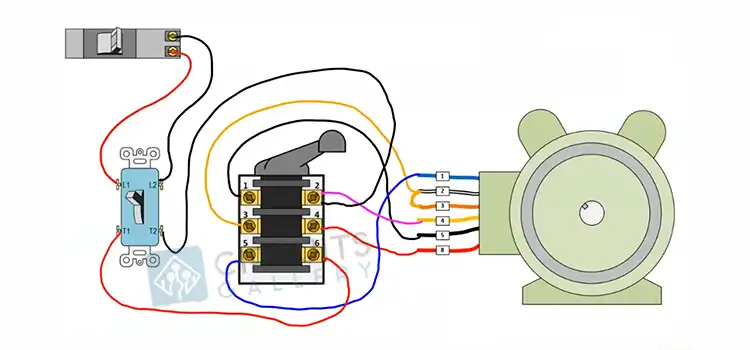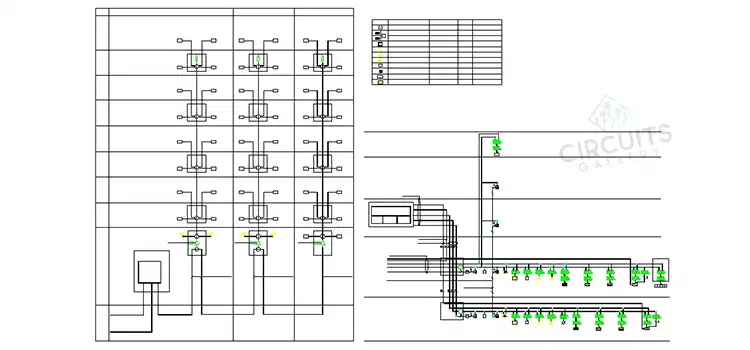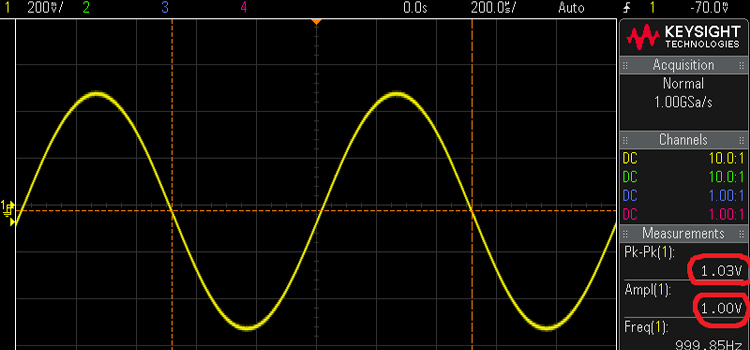No Voltage Hot to Neutral but 120V Hot to Ground | Fact Behind That
You must measure either hot-ground or neutral-ground. Hot and neutral have been switched around if the neutral-ground voltage is around 120 V and the hot-ground voltage is a few volts or less. There should be some neutral-ground voltage when the system is under load; 2 V or slightly less is often acceptable.

No Voltage Hot to Neutral but 120V Hot to Ground
There can be various reasons behind not getting any voltage from hot to neutral. You must choose where to begin your investigation as there can be operating issues with some of the 120V equipment and the power supply can be blamed.
Don’t go straight to the distribution panel board that supplies the circuit. Instead, start by examining the outlet that is closest to the problematic equipment. hot-to-neutral voltage reading represents the voltage that the load will experience.
You should typically get a reading of between 115V and 125V on a 120V circuit. If there’s no voltage between hot to neutral it’s concerning. Typically there might be a problem with the connection somewhere.
Continuity Test
Cut the power to the circuit, set the meter to measure ohms or continuity, then proceed to each outlet to check the neutral to the ground. Providing this circuit isn’t fed from a sub panel, that is. When neutral and ground are continuous, the issue will be with that outlet or the one it feeds next.
To determine what was on the panel, collect measurements from it before cutting the power. Then remove every device from the branch circuit and measure each one as it was connected.
Check Connections
As mentioned before, the no voltage case usually indicates that there is a loose or open neutral connection somewhere in the circuit. In the neutral path leading from the disposal back to the panel, check all of your connections. There is likely a weak connection present.
Determine your approximate location on the circuit and estimate where the panel’s middle could be. Look things over there. Start working away from the panel if everything is in order there. If there are still problems, start working on the panel. Continue until you identify the issue.
Should There Be Voltage Between Hot and Ground
The reading from the hot to ground should be the highest of the three. Under typical, non-fault conditions, there shouldn’t be any current flowing through the ground circuit, resulting in no IR drop.
Consider the ground connection as a line that travels back to the neutral at the source (the main panel or the transformer). The ground is not linked to any voltage source on the receptacle end of the ground path, where the measurement is being performed. Therefore, the ground wire functions as a lengthy test lead that leads back to the source voltage.
When a load is attached, the hot-ground receptacle source voltage should be equal to the total of the hot-neutral voltage (the voltage across the load) and the neutral-ground voltage that is the voltage drop on the neutral all the way back to its connection to the ground circuit.
Should There Be Voltage From Neutral-To-Ground
Both Neutral and ground are linked to the same spot inside the breaker panel. This implies that a voltmeter would report 0 volts if used to measure the voltage at the panel between Neutral and Ground. However, it usually doesn’t show 0 volts.
Why Am I Getting 120V From Neutral-To-Ground
A measurement of 120 volts on the neutral to ground can result from a neutral that is not linked someplace. A correctly wired home or the site may experience a minor voltage drop on the neutral wire due to cable resistance while the current is flowing or an unbalanced three-phase system.
Copper’s Resistance
The line and neutral wires in an electrical circuit act as a conduit for electrical current to travel to and from the electrical load. To put it another way, if a load needs 10 Amps of electricity, that current is delivered by the line wire and returned to the breaker panel through the neutral wire.
Typically, copper is utilized to make the wire used in electrical distribution networks. Copper wire has resistive properties per unit of length while being a very good conductor. Resistances may accumulate to the point where they do influence the system’s performance if the wire is particularly long.
When the connected equipment is drawing a lot of currents and the wire between the breaker panel and the service outlet is long, the resistance in the wire will result in a voltage drop along the neutral wire. This neutral voltage is known as a neutral to ground voltage when it is measured with respect to the ground.
Three Phase System
The electrical supply is most commonly provided as 3-phase Wye or Delta in commercial structures. Rather than passing through the neutral line again, the return current balances out. If the current draw between the three phases is balanced, this theory is valid.
If all three phases are connected to the same load, such as a motor, phase balancing is simple. Modern technologies have, however, altered the way we utilize electricity. Instead of continuously drawing current, switch-mode power sources do so intermittently. Additionally, there isn’t a lot of focus on balancing the number of electronic loads among the three phases.
Therefore, imbalances between the phases develop when placing modern electronic loads in a structure with an older electrical distribution infrastructure. Additionally, a larger than expected current will flow through the undersized neutral cable, resulting in neutral to ground voltages.
Why Is My Neutral and Ground Still Hot
The neutral will become hot from the light to the site of the break in the neutral if the neutral is broken anywhere between the lightbulb and the panel and the device will be unpowered because no current will be flowing through it. Find an unconnected neutral by looking.
Turn off everything in the circuit that contains the hot neutral to check for a broken neutral. If the neutral is no longer hot, a neutral in the circuit has certainly been unplugged.
Conclusion
Voltage measurements of an electrical system should be checked to understand the overall condition of a system. The problem of not getting any voltage between hot to neutral, but getting maximum voltage between hot to the ground is often a common problem. If you’re not comfortable with checking the connection by yourself, try to seek help from an expert.
Subscribe to our newsletter
& plug into
the world of circuits
![[Answered] What Is 0dB or 20dB?](https://www.circuitsgallery.com/wp-content/uploads/2023/09/What-Is-0dB-or-20dB-1.webp)




![What Does Current 0 Mean [You Need to Know]](https://www.circuitsgallery.com/wp-content/uploads/2023/08/What-Does-Current-0-Mean.webp)